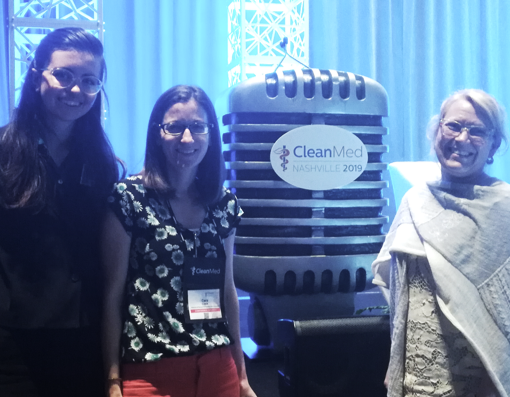On September 17, 2024, a Congressional briefing highlighting the severe health risks associated with paraquat, one of the most dangerous herbicides used in commercial agriculture was hosted. The event was organized by prominent advocacy groups such as the Michael J. Fox Foundation for Parkinson’s, Alianza Nacional de Campesinas, and the Environmental Working Group, with support from the Congressional Hispanic Caucus. It shed light on the herbicide’s undeniable link to Parkinson’s disease and various cancers, especially among agricultural workers and communities living near farms. The discussion made it clear that immediate regulatory action is needed to protect public health.
The Health Risks of Paraquat
The evidence linking paraquat exposure to Parkinson’s disease is overwhelming. According to research presented, people exposed to paraquat have double the risk of developing the disease. This statistic alone is alarming, but the dangers don’t stop there. Studies have also shown that paraquat residue found on food poses an increased risk of developing cancer, placing not just farmworkers but the general population at risk. Internationally, countries like China, Switzerland, and England have banned the use of paraquat due to these very dangers. However, in the U.S., the Environmental Protection Agency (EPA) is still deciding whether to allow its continued use. The EPA’s final decision on re-registering paraquat for the next 15 years is due in January 2025, which is a critical window for public health advocacy.
Voices from the Field: Real Lives Affected
Several speakers, including former farmers and community organizers, shared their personal experiences with paraquat exposure:
David Jilbert, an environmental engineer turned farmer, shared his personal battle with Parkinson’s after being diagnosed in 2021, two years after selling his farm. His story underlines the devastating impact of paraquat, especially on those who work closely with agricultural chemicals.
Nora Jackson, a former farmer and organizer, highlighted the lack of training and awareness among farmworkers regarding pesticide use. She spoke about her cousin’s diagnosis of Parkinson’s, which they attribute to pesticide exposure, and her sister’s declining health after living near a commercial farm. Nora emphasized the barriers Hispanic farmers face in accessing health resources, pointing to immigration status, lack of paid leave, and inadequate insurance as major issues.
Charlene Tenbrick, another former farmer, echoed these concerns. Despite following safety protocols and using personal protective equipment (PPE) as instructed, she still developed Parkinson’s disease. She stressed that safer pesticide alternatives exist, urging policymakers to prioritize these alternatives over harmful chemicals like paraquat.
The EPA’s Role and a Call to Action
A key takeaway from the briefing was the urgent need for regulatory reform. Current federal pesticide laws often prioritize the registration of chemicals over public health protection. With the EPA’s decision deadline on paraquat looming, now is the time for health professionals, advocates, and the public to engage in this conversation.
Call to Action for Health Professionals
As health professionals, particularly nurses, we have a unique opportunity to advocate for environmental health and the well-being of those most affected by hazardous chemicals like paraquat. Here are some actionable steps we can take:
1. Monitor the EPA’s developments regarding the re-registration of paraquat and its impact on agricultural workers and consumers.
- Stay updated on pesticide regulations, including paraquat, via the EPA Pesticide Program.
- Get the latest research on pesticides like paraquat and their health risks from the Environmental Working Group (EWG)
2. Join forces with advocacy groups pushing for safer agricultural practices. Use your platform to influence policy change at both the state and federal levels.
- Advocate for stronger regulations to protect public health by joining the Michael J. Fox Foundation Advocacy Network.
- Engage in legal and policy advocacy to restrict dangerous chemicals like paraquat with resources from National Resources Defense Council (NRDC).
- Get involved in campaigns and petitions against pesticide use, and explore safer alternatives through Pesticide Action Network (PAN) North America: PANNA Campaigns.
3. Educate your patients, especially those in rural or agricultural communities, about the risks of pesticide exposure. Help them identify signs of exposure and connect them with the resources they need.
- CDC Pesticide Illness & Prevention: The Centers for Disease Control and Prevention (CDC) offers guidelines for recognizing and treating pesticide exposure in healthcare settings.
4. Advocate for better healthcare access, insurance, and support systems for agricultural workers, many of whom face significant barriers to care.
- Farmworker Justice advocates for better healthcare access, legal support, and worker rights, particularly for farmworkers.
- Empower Hispanic and immigrant farmworkers with resources from Alianza de Campesinas.
- The National Pesticide Information Center (NPIC) provides information on pesticide health risks and safety measures for both workers and healthcare providers.
The Alliance of Nurses for a Healthy Environment (ANHE) is committed to ensuring that health professionals take a leading role in addressing these environmental health challenges. Let’s use our voices to push for the elimination of paraquat and protect future generations from its devastating effects.




